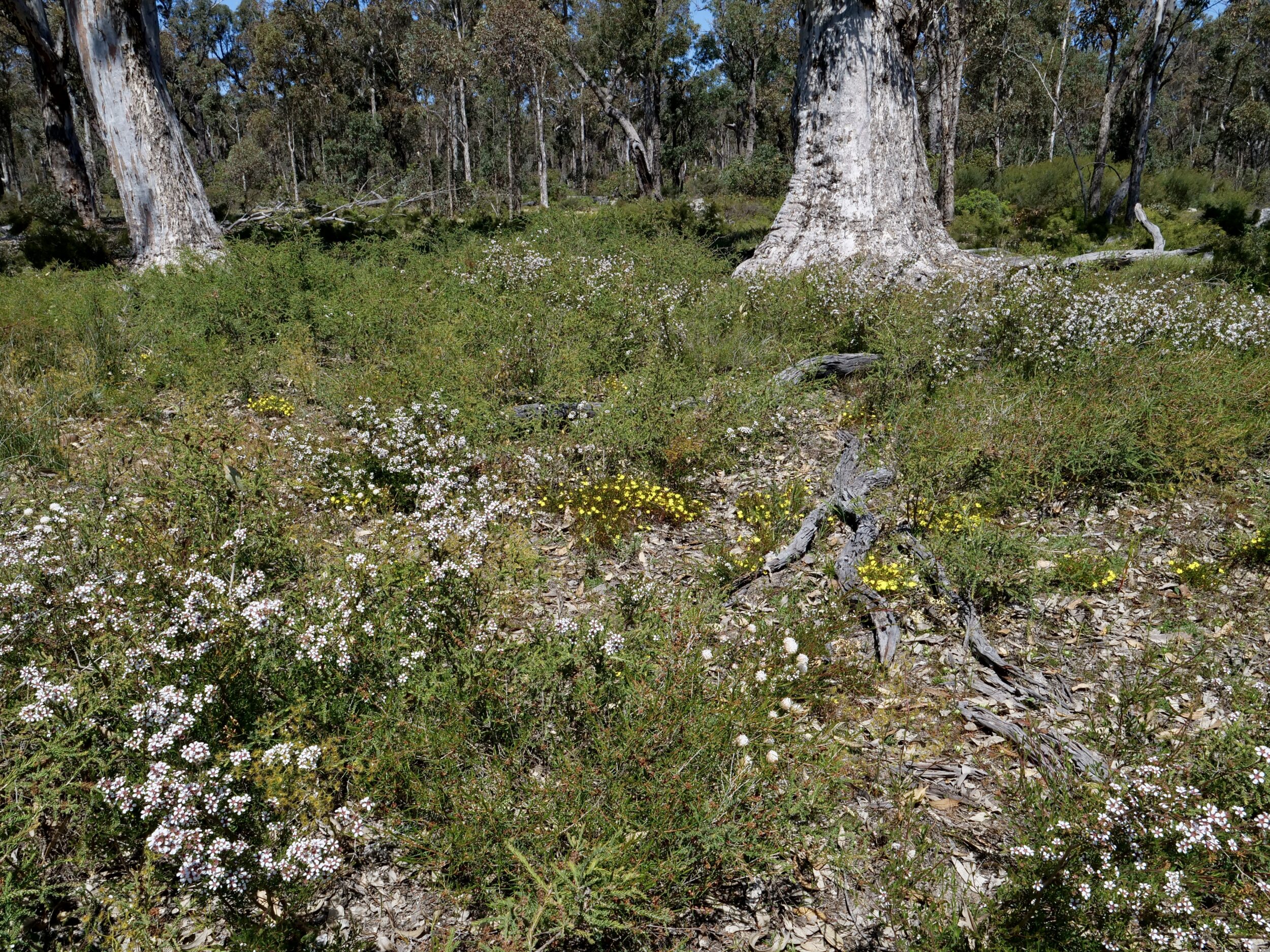This post’s photo was taken not very many footsteps distant from where I took the preceding post’s featured shot.
As you can see, even a very cursory glance at today’s featured image reveals an abundance of flowering plants, in bloom.
”A marked contrast to the plant life in yesterday’s picture”, you think?
Now, go back to yesterday’s picture, and zoom in on/ enlarge it.
Surprise!
On closer inspection, you can surely see that its “flower-free” forest floor actually has more than a few flowering plants, in bloom.
To appreciate just how rich, how strange – and how wonderful – is the flora of southwestern Australia, you need to look closely.
If you fail to do so, you will almost certainly fail to notice even the very presence of many species.
And if your glance is merely cursory – but enough for you to notice the presence of a particular, seemingly “plain” or “rather dull” wildflower – your low estimation of it is probably the insipid fruit of your failure to look closely/carefully enough.
Even the obviously-spectacular, strikingly-colourful and/or “wondrous strange” WA wildflowers (kangaroo paws, for instance) offer a whole lot of additional detail and delight to those who bother to look, closely.
Coming up next on Pelican Yoga: a series called October 30 2023: Darling Range flora, “up close”
Footnote
Australia’s climates – plural – are hugely varied.
Accordingly, before 1788, the humans whose ancestors had accumulated thousands of generations worth of experience of Australian natural realities had devised more than a few different ways of describing/calculating/numbering “the seasons”.
All indigenous Australian versions have a key element in common: they are based on observation of what is actually occurring, rather than on preconceived notions about when it “should” be occurring.
For many thousands of years, southwestern Australia’s humans observed six different seasons.
In any one year, each one of them could be “earlier” or “later” – and longer or shorter – than in another year.
Click here for a summary/explanation of southwest Western Australia’s six seasons.
Click this for a more general perspective on indigenous Australian seasons.
